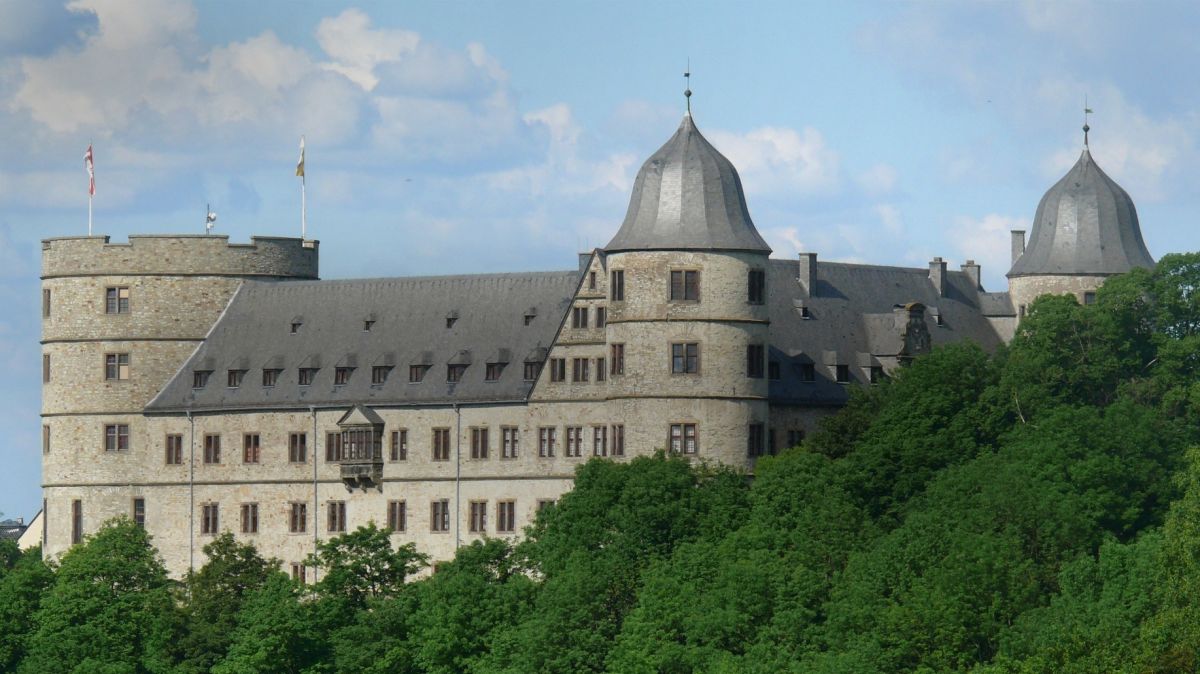History of Wewelsburg Castle

Early period
| No date | A rampart with three segments |
| 1123-1124 | The castle of Count Friedrich von Arnsberg is destroyed by peasants after his death |
Medieval Castle
| 1301 | Count Otto von Waldeck transfers the rights to the Bishopric of Paderborn; the noblemen of Büren (Waldeck’s vassals) are enfeoffed with half the castle |
| 1303 | Sir Friedrich von Brenken (Paderborn vassal) is enfeoffed with half of the castle |
| 1359 | The castle is pledged to the noblemen of Büren; Sir Friedrich von Brenken is made a vassal of the noblemen of Büren |
| 1384 | The shares of the noblemen of Büren are repurchased by the Bishopric; the castle and half of the demesne of Wewelsburg are pledged to Friedrich von Brenken |
| 1385 | Sale of the other half of the demesne to the Bishopric |
| 1513 | Once again, the castle and the demesne are pledged to the noblemen of Büren; a quarter is immediately pledged to von Brenken in turn |
Secondary Residence of the Prince-Bishop
| 1588/1589 | The Bishopric of Paderborn redeems the pledge |
| 1603-1609 | On initiative of the Prince-Bishop Dietrich von Fürstenberg the building is converted into a regular triangular structure with three corner towers |
| 1622-1637 | Repeatedly taken during the Thirty Years’ War |
| 1646 | Stormed by Swedish troops; the entire castle was in a flame |
| 1650-1660 | Restoration work; further conversion and repair work is done during the following years |
A Prussian Demesne
| 1802 | In the wake of secularisation, the castle is transferred to the ownership of the Prussian state |
| 1815 | The North Tower is destroyed after being struck by lightning followed by a fire |
| until 1821 | The steward’s apartment in the southeast corner |
| 1832-1934 | The rectory in the steward’s former apartment |
| during the 19th Century | Further conversion work is carried out – without a conservation concept; some rooms were used as grain storage |
Youth hostel, Cultural Centre and “Heimatmuseum” of the District of Büren
| 1924/1925 | Purchase and development of Wewelsburg castle by the district of Büren: hikers’ hostel, a hall for events and a “Heimatmuseum” (museum of regional history) |
Ideological megalomania of the SS and concentration camp terror
| 1933 | “Reichsführer SS” Heinrich Himmler first visits Wewelsburg Castle; order to lend it and first plans for alterations |
| 1934 | Leasing contract between the district of Büren and the SS for the period of 100 years and the cost of 1 Reichsmark per year |
| 1935 | Prohibition of any kind of public visit to Wewelsburg Castle; official title “SS-Schule Haus Wewelsburg” (“Wewelsburg SS School”) |
| 1937 | Opening of the “Dorfgemeinschaftshaus” (“village community house”, so called “Ottens Hof”); completion of the SS guard building in the castle’s forecourt |
| 1939 | Einrichtung des ersten Konzentrationslagers unterhalb der Burg |
| 1939 | First conversion plans for the North Tower and the extension of the castle into a palace complex in the centre of the village Wewelsburg |
| 1940 | Construction of a new concentration camp, ca. 600 m from the castle in the district Niederhagen; the inmates were used for the building work |
| 1940 | The architect Hermann Bartels introduces plans for a huge SS castle complex, covering the area of the entire village. Until the end of the war these plans are constantly varied and extended. |
| 1941 | Meeting of high ranking SS leaders with Heinrich Himmler on the eve of war against the Soviet Union |
| 1941 | Wewelsburg concentration camp becomes an independent main camp (on the same administrational level as camps like Sachsenhausen, Dachau and Buchenwald) with the name Niederhagen/Wewelsburg |
| 1943 | Stop of construction works at Wewelsburg Castle and reduction of the concentration camp except for 42 inmates; use of the former concentration camp grounds as a camp for “ethnic Germans” (German minorities from European countries who were supposed to be settled in Germany) and as a paramilitary training camp for members of the “Hitler Youth” |
| 1945 | SS troops attempt to blow up Wewelsburg Castle, the fire destroys huge parts of the building; liberation of the 42 remaining concentration camp inmates by US troops |
After 1945
1948/1949 | Wewelsburg Castle is reconstructed by the district of Büren as its owner |
1950 | The youth hostel (Deutsches Jugendherbergswerk) and the “Heimatmuseum” move back into the castle (opening of the painting cycle by Jo Glahé in the “Crypt” of the North Tower, an early memorial against violence and war made possible by citizen’s commitment) |
1964 | Opening of an “Eastern German Heritage Museum” (existed until 1985) |
1973-1975 | Reconstruction of the North Tower |
1975 | Transfer into the ownership of the District of Paderborn (within the scope of the territorial reorganisation of local government) |
1982 | Opening of a contemporary history exhibition called “Wewelsburg 1933–1945: Cult and Terror Centre of the SS” in the former SS guard building on the forecourt of the castle |
1985 | Opening of the contemporary exhibition “Germans in eastern Central Europe – Culture, Expulsion, Integration”, dealing with the history of Meseritz (Miedzyrzec) and Schwerin a. d. Warthe (Skwierzyna), the sister districts of the District of Paderborn; closed in 2009 |
1996 | Opening of the Historical Museum of the Prince-Bishopric of Paderborn in the East and South Wing of the castle |
2009 | Jubilee year: 400 years of Wewelsburg Castle |
2010 | Opening of the newly designed and extended contemporary history section as Wewelsburg 1933–1945 Memorial Museum with the exhibition “Ideology and Terror of the SS” in the former SS guard building on the forecourt of the castle |
2014 | The Historical Museum of the Prince-Bishopric of Paderborn closes for renovation work from 3 November to August 2015 |
2015 | 90 Years of Wewelsburg District Museum, 31 May |
2015 | Reopening of the renovated Historical Museum of the Prince-Bishopric of Paderborn with large museum festival on Sunday 23 August |
Address
Kreismuseum Wewelsburg
Burgwall 19
33142 Büren-Wewelsburg
Germany
Contact
Phone 02955 7622-0
Fax 02955 7622-22
nfwwlsbrgd
Contact form
Informative
Wewelsburg





